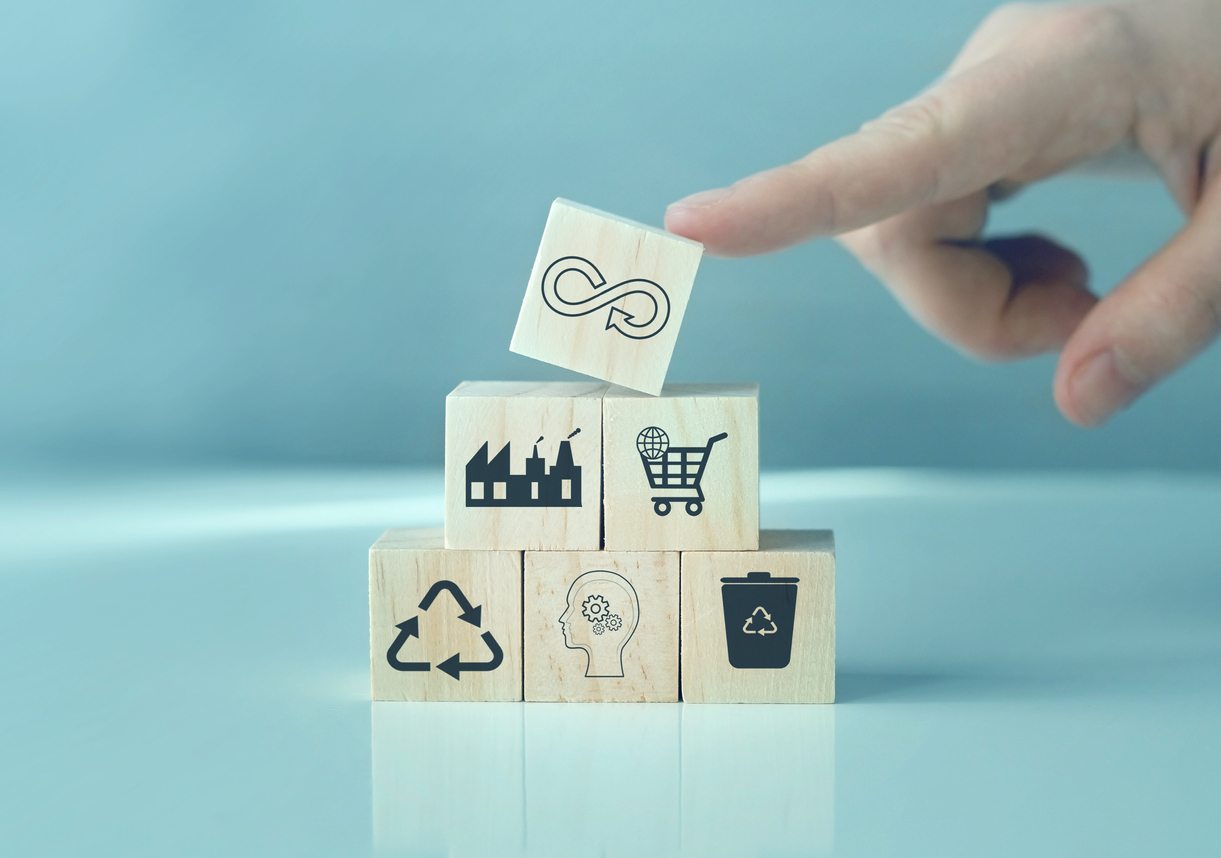
Thrift stores and vintage clothing shopping has grown in popularity amongst younger consumers. In 2022, the global used and resale apparel market was estimated to be worth 177 billion dollars and, by 2027, is expected to reaching a value of 351 billion dollars. As the largest clothing market in the world, the United States is the leading the exportation of used clothing and thrift items, but how can we use this trending economic concept in the classroom? Teachers can use this modern trend to snag student interest in economics and introduce key concepts such as circular and underground economy.
History of the Circular Economy
Historically, consumers of used clothing have been those with fewer financial resources. In the pre-industrial world when the production of textiles was labor intensive and time consuming, clothing of people from all socio-economic classes were handed down to family members or servants and recycled until it was simply threads. This is where the term “circular economy” originates. Old clothing was sold to resale shops and itinerant merchants. As industrialization grew in the nineteenth-century, the value of clothing declined. Middle class consumers could afford to donate old clothing to charitable, non-profit agencies such as the Salvation Army and Goodwill. These organizations began selling donated clothing in the late nineteenth- and early twentieth-century.
Today, charitable thrift shops compete with large online retailers of used clothing and trendy brick-and-mortar vintage retailers. Even upscale retailers are promoting the resale of used items of their own brands.
History of the Underground Economy
Informal (or underground) economy is another, related economic concept. The informal economy includes businesses, workers, and jobs not regulated by the government. Those who work in the informal economy do not disclose their income to the local, state, and federal government at income tax time and therefore do not pay income taxes on the profits. While the business itself may be legal, avoiding income taxes is not. For example, people who sell used clothing at yard sales or flea markets and do not pay taxes on the profits are a part of the informal economy.
On the other hand, some products sold on the informal economy are illegal. Examples include sales of illegal drugs, the sale of stolen goods, or prostitution where it is not legalized. The black market, grey economy, underground economy, and shadow economy are additional terms used to describe this concept. Since income is not reported, economists are unable to include the value of transactions in the informal economy in the GDP (gross domestic product) that measures the economy of a nation.

Classroom Activity
As a whole-class or small-group discussion, introduce the concepts of circular economy (a model of production and consumption where materials never become waste) and informal/underground economy. Products, such as clothing, are kept in circulation through maintenance, reuse, refurbishment, remanufacture, and when the original use is finally at its end, the materials from which the clothing was made are recycled. Ultimately, the purpose of a circular economy is to slow waste and pollution created by endless manufacture of new clothing, thus reducing climate change and depletion of the natural resources.
Additionally, poll students about their own interest in thrifting and vintage clothing and the reasons why they are or are not interested in the used clothing market. Private, anonymous polling is recommended as students from different backgrounds may have diverse and conflicting options.
The poll will likely reveal two key modern trends:
- While many in older generations still have negative associations between used clothing and poverty, younger consumers are more likely to have positive associations associated with concern for the environment and more affordable, but stylish options.
- Younger consumers are more likely to purchase second-hand clothing from online retailers via smartphone apps.
Encourage students to discuss the trends in the poll and what potential benefits and cons of informal economy could be. Additionally, have them discuss how a circular economy may apply to their own lives and future. Economic terms are often meaningless without concrete examples. Vintage and used clothing sales are excellent examples of both the circular economy and informal economy that are especially memorable because of student interest, consumption, and the concept’s modern trendiness.
Reference
“Secondhand apparel market value worldwide from 2021 to 2027” Statista, https://www.statista.com/statistics/826162/apparel-resale-market-value-worldwide/
Want more lessons and activities for your Economics classroom?
Get a free trial of Active Classroom to explore more instructional resources.
Cynthia W. Resor is a recently retired social studies education professor and former middle and high school social studies teacher. Her dream job? Time-travel tour guide. But until she discovers the secret of time travel, she writes about the past in her blog, Primary Source Bazaar. Her three books on teaching social history themes feature essential questions and primary sources: Discovering Quacks, Utopias, and Cemeteries: Modern Lessons from Historical Themes; Investigating Family, Food, and Housing Themes in Social Studies and Exploring Vacation and Etiquette Themes in Social Studies.